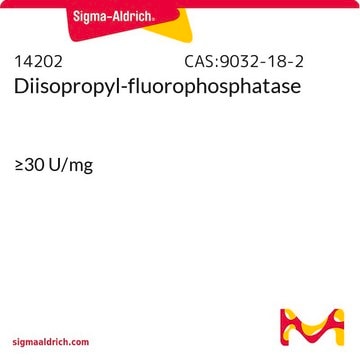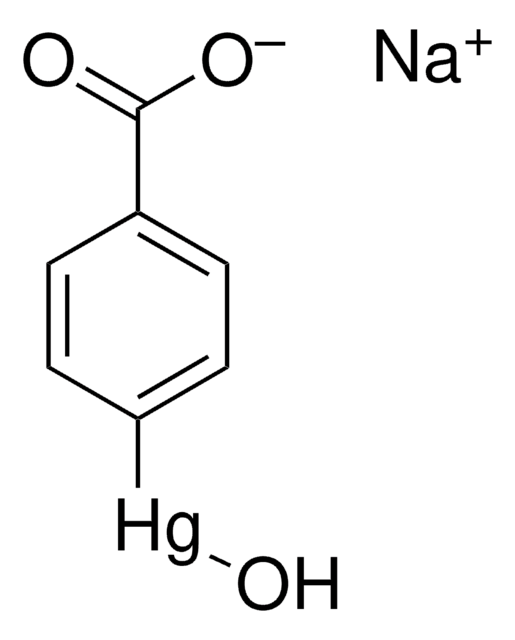38399
Diisopropylfluorophosphate
≥97.0% (GC)
Synonym(s):
DFP, DIFP, Diisopropyl phosphorofluoridate, Phosphoric acid diisopropyl ester fluoride
About This Item
Recommended Products
vapor pressure
0.58 mmHg ( 20 °C)
Assay
≥97.0% (GC)
refractive index
n20/D 1.385 (lit.)
bp
62 °C/9 mmHg (lit.)
mp
−82 °C (lit.)
density
1.06 g/mL at 25 °C (lit.)
storage temp.
2-8°C
SMILES string
CC(C)OP(F)(=O)OC(C)C
InChI
1S/C6H14FO3P/c1-5(2)9-11(7,8)10-6(3)4/h5-6H,1-4H3
InChI key
MUCZHBLJLSDCSD-UHFFFAOYSA-N
Gene Information
human ... ACHE(43) , PTGS1(5742) , PTGS2(5743)
Looking for similar products? Visit Product Comparison Guide
Biochem/physiol Actions
Analysis Note
Other Notes
replaced by
Signal Word
Danger
Hazard Statements
Precautionary Statements
Hazard Classifications
Acute Tox. 1 Oral - Acute Tox. 2 Dermal - Acute Tox. 2 Inhalation
Storage Class Code
6.1A - Combustible acute toxic Cat. 1 and 2 / very toxic hazardous materials
WGK
WGK 3
Flash Point(F)
Not applicable
Flash Point(C)
Not applicable
Personal Protective Equipment
Choose from one of the most recent versions:
Already Own This Product?
Find documentation for the products that you have recently purchased in the Document Library.
Our team of scientists has experience in all areas of research including Life Science, Material Science, Chemical Synthesis, Chromatography, Analytical and many others.
Contact Technical Service









